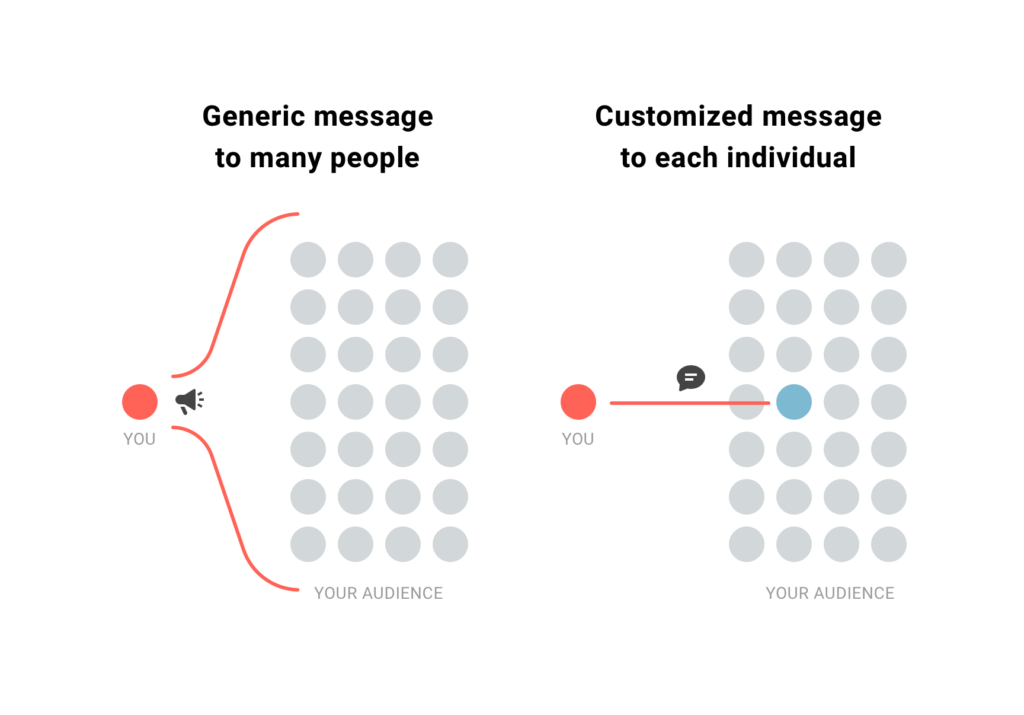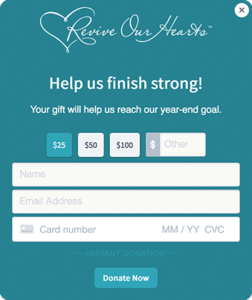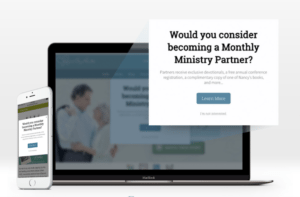It’s long been known that even small amounts of personalization can increase the response rates from donors significantly. Details as small as using the donor’s first name, or a handwritten signature at the bottom of donation request letters can make a huge impact.
The digital age has ushered in the next wave of personalization, driven by big data and AI. It may sound daunting, but it’s easier than you think and your organization can start seeing results today.
What is account based marketing?
Let’s start at the beginning, you may have heard the term account based marketing (called ABM for short), but you might be wondering what ABM is and how it can help your nonprofit. To put it simply, account based marketing (aka “ digital personalization”) is viewing your donors and volunteers as individuals rather than one large group.

Think of it as being able to know each of your donors personally, their interests, their motives for supporting your mission and so much more. Those types of relationships are invaluable, but hard to scale, that’s where big data and AI come into play – processing considerable amounts of information in real-time and present messaging that speaks directly to the user’s interests.
Account Based Marketing Tactics
Knowledge is great, but if you don’t put it to use it’s not worth much. So now that you know what account based marketing is… let’s take a look at a few tactics you can test right away.
Targeting based on content affinity
Look at the content on your website and see if it can be grouped into specific themes. Once your content is segmented you can create a message that resonates with people who visit multiple pages within that segment.
Example: If you are an organization that serves the homeless you might have several articles relating to what homeless people need, if someone reads 3-4 of these articles there is a good chance they are interested in meeting the needs of the homeless. While he/she is reading the 4th article, it would be the perfect time to send the individual a quick link to register to become a volunteer.
 Targeting Based on Engagement Levels
Targeting Based on Engagement Levels
Do you know who your super fans are? Some visitors to your website are just learning about your organization, but others are passionate supporters of your mission. These visitors are happy to share your content, attend your events and do just about anything else that will help further your cause.
Example: Imagine you run a “donate your birthday” campaign encouraging website visitors to ask their friends to donate to your organization instead of buying them a gift on their birthday. A first time visitor to your site might not be ready for that level of commitment, but your top 10% most engaged visitors are likely to jump at the opportunity.
Targeting Based on Geolocation
Are you hosting a local event? People on the other side of the world are not likely to attend. However, people in your city or nearby might be interested in attending. Create a specific message targeted only to users near the event (using zip codes and miles radius) will get you a much better response rate.
Example: If you have live fundraising events throughout the year, such as benefit concerts or a holiday gala, you can create timely messages that are only visible to users within or near a certain event location.

Targeting Based on User Actions
In the e-commerce world there’s a lot of talk around solving cart abandonment. This is when a user adds products to their virtual cart, but never completes the checkout process. Do you know how many people have visited your donation form, but left without donating? Or number of people that started to fill out your volunteer form, but didn’t make it to the end? These users may have intended to complete that donation, but were interrupted and forgot to come back. Sending a personalized message to this audience is a fantastic way to increase donations.
On the other hand, there are users that have donated multiple times. They are clearly strong supporters and might be willing to become monthly recurring donors if they see the right prompt at the right time.
Example: If you find that many people are reaching your donation form, but few actually complete the donation — You can increase donation rates by giving them a prompt asking if they had any problems using the donation forms.
Targeting Based on Real-Time Needs
If you need to get a message out quickly, it’s most likely to get a response from those who are engaging with your content right now.
Example: If you work with the homeless and need to send “code blue” warnings, you could send an email to your list, but many people won’t see it until it’s too late. Instead you could quickly send a notice to users that are currently reading your website. Your message distributes – just like that — in REAL time.
Summary
As you can see, there are significant benefits of account based marketing for your organization and maybe you already have some ideas of you could use it right now to further your cause. If you’re excited about the possibilities, you can get started for free with a Journity account, the first real-time personalization platform designed specifically for nonprofits.
About the Author:
 Josh Kashorek is the Digital Growth Strategist at Journity. His superpower is the ability to convert data into high performance marketing campaigns. When he is not scouring spreadsheets and graphs for the next campaign, he likes to get outdoors and spend time with his wife and kids.
Josh Kashorek is the Digital Growth Strategist at Journity. His superpower is the ability to convert data into high performance marketing campaigns. When he is not scouring spreadsheets and graphs for the next campaign, he likes to get outdoors and spend time with his wife and kids.